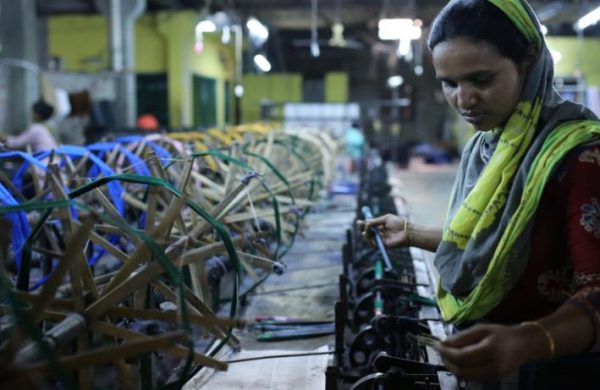Integrated efforts to boost silk export stressed
- Update Time : Sunday, November 13, 2022

Rajshahi Bureau: Integrated efforts of all the government and private organizations concerned can be the best way of boosting export volume of silk and its products as its prospects are very bright.
Golden tradition of silk industries is expected to revive within a shortest possible time with breakthrough innovation of high yielding varieties of silkworms and mulberry plants creating scopes of enriching the export list.
High officials and experts came up with the observation while addressing a seminar titled “Product Development, Diversification and Adaptation for Export of Rajshahi Silk” yesterday.
Rajshahi Regional Office of Export Promotion Bureau (EPB) organized the seminar at its conference hall under the National Export Training Programme of 2022-2023 financial year.
EPB Vice chairman AHM Ahsan and Director of Bangladesh Silk Development Board (BSDB) Dr Abdul Mannan addressed the seminar as chief and special guests respectively, while President of Bangladesh Silk Industries Owners Association Liakat Ali was in the chair.
AHM Ahsan told the meeting that they are working to boost silk export through mitigating and overcoming the existing problems in this sector.
BSDB Director Emadul Bari illustrated the prospects and problems of the silk sector besides the existing export prospects during his keynote presentation.
He said Bangladesh Sericulture Research and Training Institute (BSRTI) has innovated 20 silkworm and 15 mulberry plant varieties after a long research creating massive hope of revitalization of the prestigious silk sector.
Silk production will be enhanced by around 12 to 15 percent together with decreasing the dependence on import of silk yarn amid the variety innovation recently. Farmers will also be benefited enormously by virtue of the innovation.
Dr Abdul Mannan said they conducted need-based research under a five-year project for production enhancement of silk through technology development expansion and skilled manpower generation.
Through the Tk 35.66-crore project, 20 silkworms and 15 mulberry plants have been added to the present stock cumulating the number of silkworms to 114, while mulberry plants to 38.
Apart from this, mulberry variety has been elevated to 84 from 60, while silkworm variety to 114, including 27 high yielding ones, from 85 in BSRTI’s germplasm bank with the development of the 35 new varieties.
By dint of the innovation of 20 silkworm varieties, production of 70 to 75 kilograms of silk could be possible from per 100 disinfectant eggs within less time, while the previous figure was 60 to 65 kilograms.
Besides, 40 to 47 tons of mulberry leaves could be produced per hectare of land yearly amid innovation of the 15 mulberry varieties, whereas the previous figure was 30 to 37 tons.
Dr Mannan said the newly developed varieties will be expanded to the grassroots farmers as soon as possible so that they can derive total benefits of the research outcomes.
He added that they are encouraging the farmers towards mulberry farming as the main crop with the ultimate goal of boosting silk production. Currently, mulberry plants are being cultivated on homesteads and roadside vacant places.
EPB Director Kumkum Sultana moderated the discussion, while its Assistant Director Kazi Saidur Rahman welcomed the participants.













